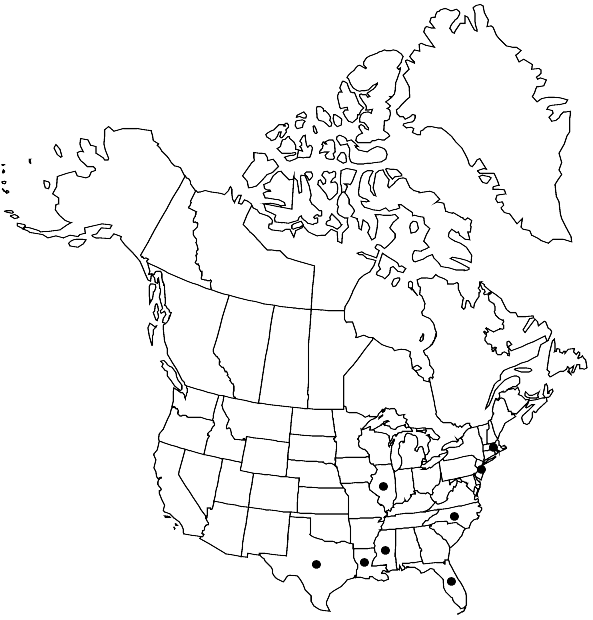Fissidens hallianus
J. Linn. Soc., Bot. 21: 560. 1885,.
Plants to 120 × 6 mm. Stem usually profusely branched; axillary hyaline nodules absent; central strand absent. Leaves in numerous pairs, lanceolate to linear-lanceolate, acute, to 6.5 × 0.7 mm; dorsal lamina narrowed proximally, usually ending before insertion; vaginant laminae 1/4–1/2 leaf length, acute, unequal in most leaves, minor lamina rounded above, attached on or near costa, ± equal on proximal part of stem, minor lamina ending near leaf margin; margin ± entire, elimbate or limbate in the proximal 2/3 or less of vaginant laminae; costa ending 5–15 cells before apex, bryoides-type; laminal cells 1-stratose, distinct, smooth, slightly bulging, ± firm-walled, quadrate to oblong to hexagonal, 10–15 × 9–11 µm. Sexual condition cladautoicous; perigonia on elongate, axillary branches; perichaetia terminal on mains stems and elongate, axillary branches. Sporophytes 1–2 per perichaetium. Seta 0.7–1.5 mm, often bent at the vaginula. Capsule theca erect, radially symmetric, 0.4–0.8 mm; peristome anomalous, teeth variable, undivided and often fenestrate to divided 2/3 their length, even in same capsule, nearly smooth to papillose proximally, filaments with straight or spiral thickenings or striations; operculum 0.4–0.6 mm. Calyptra not seen. Spores 14–32 µm.
Habitat: Flowing and non-flowing water over limestone, granite, and bases of trees, especially abundant in Taxodium-Nyssa swamps
Distribution

Fla., Ill., La., Mass., Miss., N.J., N.C., Tex.
Discussion
Fissidens hallianus, named for Elihu Hall, has been confused with F. fontanus; they can be found growing together and both have similar vaginant laminae, although in F. hallianus there can be a weak limbidiuim on the proximal margin. Moreover, the costa is longer in F. hallianus than in F. fontanus. The sporophytes of F. hallianus are terminal, the number per perichaetium usually fewer than in F. fontanus, the seta is longer, relative to the length of the capsule, and the peristome teeth are complete. Sexual reproduction appears to be dependent on seasonal exposure.
Selected References
None.